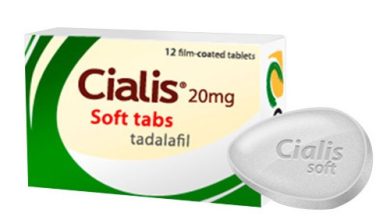How long is the recovery period after a tattoo removal session?
How long is the recovery period after a tattoo removal session?

1. Introduction
Tattoos have been around for centuries, serving as a form of expression, art, or cultural significance. However, for various reasons, individuals may seek to have their tattoos removed. Whether it’s due to a change in personal taste, a professional requirement, or an unsatisfactory tattoo job, the demand for tattoo removal has grown in recent years. One critical aspect often overlooked by those undergoing the procedure is the recovery period that follows each session.
Recovery time after tattoo removal is an important factor to consider, as it can affect daily activities, skin health, and the overall success of the removal. In this article, we will discuss the recovery process, factors that influence recovery time, typical side effects, and best practices to ensure a smooth healing journey.
2. Factors Affecting Recovery Time
The recovery period after a tattoo removal session can vary depending on several factors. Here are some of the key aspects that influence how long it takes to fully recover:
2.1 Skin Type
Skin type plays a major role in the recovery period. People with lighter skin tones may experience a quicker recovery than those with darker skin due to the difference in how the skin responds to the laser used during the tattoo removal process. Darker skin is more prone to pigmentation changes, which can extend the recovery time.
2.2 Tattoo Size and Location
The size and location of the tattoo also impact recovery time. Larger tattoos typically require more sessions to remove and may lead to longer recovery periods between each session. Additionally, tattoos in areas with thinner or more sensitive skin, such as the face, neck, or hands, might take longer to heal than those on thicker-skinned areas like the back or legs.
2.3 Removal Technique Used
Several methods are used to remove tattoos, with laser removal being the most common and effective. Each technique comes with its own recovery time:
- Laser Removal: Generally, laser tattoo removal requires multiple sessions, and the recovery period between sessions can range from 4 to 8 weeks. This technique is known for its effectiveness but can cause redness, swelling, and blistering.
- Dermabrasion: A more invasive method where the skin’s top layer is removed. This can take longer to heal and may leave scars.
- Surgical Removal: Involves physically cutting out the tattoo. Surgical removal leads to the longest recovery time, as it requires stitches and wound care.
2.4 Overall Health and Immune System
A strong immune system can speed up the recovery process since tattoo removal relies on the body’s ability to break down ink particles. Those who are in good overall health, maintain a balanced diet, and avoid smoking will generally experience a faster recovery.
3. Stages of Tattoo Removal Recovery
The tattoo removal process goes through several stages of healing. Here’s a breakdown of what to expect after each session:
3.1 Immediate Post-Treatment
Immediately after the session, the treated area may appear red and slightly swollen. The skin might feel sensitive, much like a sunburn. Some patients experience mild blistering, but this is usually manageable with aftercare and subsides within a few days.
3.2 The First 24 Hours
During the first 24 hours after the tattoo removal session, it’s important to follow the aftercare instructions provided by the specialist. Keeping the treated area clean and dry, applying any prescribed ointments, and protecting the area with a bandage or dressing will help minimize infection risks.
3.3 Days 2–7: Healing and Scabbing
By the second day, the treated area may begin to scab over, and the redness should start to subside. Scabbing is a normal part of the healing process, and it’s important to avoid picking at it to prevent scarring. The area may also begin to itch as the skin heals, but it’s crucial to avoid scratching.
3.4 Weeks 2–6: Fading and Final Healing
Between weeks two and six, the skin will continue to heal, and the tattoo will begin to fade. This stage can vary from person to person, depending on the tattoo size, location, and the removal technique used. For laser treatments, a follow-up session might be scheduled during this time, as the fading process typically requires multiple sessions for full removal.
4. Typical Recovery Timeline
Different tattoo removal techniques have varying recovery timelines:
4.1 Laser Tattoo Removal
For laser tattoo removal, recovery after each session usually takes about 1 to 2 weeks, with fading continuing over the next several weeks. The entire removal process can take anywhere from 6 months to a year, depending on the tattoo size, location, and ink color.
4.2 Dermabrasion and Surgical Removal
Dermabrasion and surgical removal methods require more intensive recovery periods, often lasting several weeks. These methods may also result in more noticeable scarring, which can lengthen the time needed for the skin to fully recover.
4.3 Home Remedies and Creams
Although some opt for over-the-counter creams or home remedies, these methods are generally less effective and can take months or even years to show results, if at all. Moreover, they come with their own risks, such as skin irritation and prolonged healing.
- Common Side Effects and Complication
While tattoo removal is generally safe, it can result in some side effects and complications. These include:
5.1 Redness, Swelling, and Blistering
Redness and swelling are common immediately after treatment, especially with laser removal. Blistering may occur but typically heals within a week or two with proper care.
5.2 Hyperpigmentation and Hypopigmentation
Pigmentation changes are common side effects, especially for those with darker skin tones. Hyperpigmentation (darkening of the skin) or hypopigmentation (lightening of the skin) can occur, and these changes may last for several months.
5.3 Infection Risks
Without proper aftercare, there is a risk of infection at the treatment site. Signs of infection include excessive redness, pus, or a fever. Prompt medical attention can help prevent serious complications.
6. Best Practices for Speedy Recovery
Following aftercare guidelines is essential for a smooth and fast recovery. Here are some tips to promote healing:
6.1 Aftercare Tips for Tattoo Removal
- Keep the area clean and dry.
- Avoid exposing the treated skin to direct sunlight.
- Apply any prescribed ointments or creams as directed.
- Avoid scratching or picking at scabs to prevent scarring.
6.2 Lifestyle Adjustments During Recovery
- Stay hydrated and eat a balanced diet to support the immune system.
- Avoid smoking and limit alcohol consumption, as these can slow healing.
- Wear loose clothing around the treated area to prevent irritation.
7. Conclusion
Tattoo removal is a process that requires patience and careful aftercare. While recovery times vary depending on factors such as skin type, tattoo size, and the removal method, following best practices for aftercare can help minimize side effects and speed up healing. By understanding the recovery process and allowing the body time to heal properly, you can ensure the best possible results from your tattoo removal sessions.




